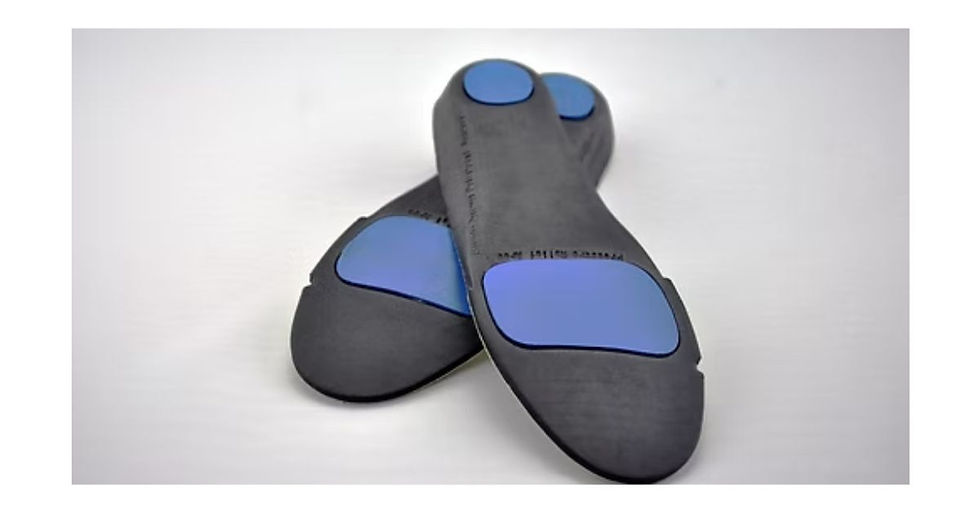A Guide to Choosing the Right Knee Brace for Knee Pain Relief
- Lifeforce Hub Singapore

- May 4, 2023
- 4 min read
Updated: Sep 26, 2024

One of the key joints in the human body that experiences a lot of wear and tear due to its frequent use is the knee joint. This joint is critical for providing support during standing and walking movements and without it, basic daily activities become increasingly difficult.
Suffering from knee problems such as regular stiffness or pain can reduce your ability to move around easily, but opting for a knee brace for knee pain to alleviate discomfort can be a great solution. This accessory can also assist you in restoring the functionality of your lower limbs.
Interested in learning about the indications that a knee brace may need to be replaced? Check out the following essential points that we have compiled for you!
Right Time to Wear Knee Braces
In the event of knee joint damage from sports or work-related injuries, the recovery time can range from several weeks to several months. Additionally, there are certain chronic joint conditions that can cause long-lasting knee pain.
Braces can provide pain relief and prevent serious knee injuries when participating in high-impact sports, as well as assist in the healing process of various injuries, including:
Patellar Dislocation- Knee braces can assist in keeping the patella in the correct position during physical activities, which is particularly beneficial for individuals suffering from patellar dislocation.
Patellar Tendonitis - Patellar Tendonitis, which causes pain in the front of the knee, can be alleviated by wearing a knee brace.
Anterior Cruciate Ligament (ACL) Sprain- A knee brace is recommended by health professionals to stabilize the joint during the recovery process of an anterior cruciate ligament (ACL) sprain.
Knee Arthritis- Knee braces can help reduce knee pain by alleviating pressure on the arthritic area, particularly beneficial for individuals with knee arthritis or those recovering from knee injuries.
Recovery from these injuries can be aided by selecting the appropriate knee brace for your specific condition.
Different Types of Knee Braces To Consider
To ensure that the knee brace you choose is effective in reducing pain and pressure, it's important to understand the various types available that are designed to address specific knee conditions.
Wearing a knee brace can provide support during the recovery process and safeguard the injured knee. The following are different types of knee braces to consider:
Compression Knee Brace
This type of knee brace is commonly used by people to prevent potential injuries. However, it can also
The compression knee brace is frequently utilized by individuals as a preventative measure against potential injuries. It is also effective for protection purposes, as it distributes the body weight, minimizing direct pressure on the knee.
This knee brace is equipped with a neoprene wrap that generates heat and provides gentle pressure to alleviate knee pain. It can also aid in relaxing injured tissues and enhancing blood flow to accelerate the healing process. Furthermore, this knee brace is suitable for supporting weakened joints.
Wrap-Around Knee Brace
If you are experiencing patellar dislocation and mild to moderate knee pain, the recommended knee brace type is the wrap-around knee brace. This brace securely holds your injured knee in place, while also being lightweight and equipped with metal bands that gently support it.
By taking the stress off your knee, it helps to facilitate easy movements and supports the healing process.
Knee Strap
For those dealing with patellar tendonitis, Osgood Schlatter, or patella tracking, the most suitable knee brace is the knee strap. It offers significant relief from knee pain and discomfort. Moreover, it can be easily worn or taken off and fits comfortably under clothing.
Hinged Knee Support
Athletes recovering from damaged ligaments are often advised by orthopaedic surgeons or sports physicians to use a hinged knee brace. This type of brace provides structural support and protection, which aids in the healing process and enhances stability.
The hinge allows for safe and easy movement of the knee joint, protecting it from harmful movements that could result in re-injury. It is important to wear the hinged knee brace until your physician advises you to remove it.
Motion Control Brace
If you have sprained or overstretched ligaments on the side of your knee, the recommended knee brace is the motion-control brace. This type of brace comes equipped with metal sleeves and support, which effectively provide the necessary support for your injured ligaments.
This brace is particularly useful for athletic activities that involve pivoting, stopping, and repetitive knee bending.
Also Read – How Long Should You Wear a Knee Brace?
What are the Features of a High-Quality Knee Brace?
When selecting a knee brace, there are several important factors to consider. Here are some key things to look for in a knee brace:
Comfortable and breathable materials
Choose a lightweight and streamlined design
Look for adjustable features and customization options
Before choosing a knee brace, it is recommended to take into account these several important factors.
Conclusion
Selecting the appropriate knee brace primarily depends on the level of support you require and your doctor's recommendations. However, to ensure you choose a high-quality brace that fits properly, it is recommended to seek professional assistance. Lifeforce Limb & Rehab Pte Ltd. provides expert guidance to help you find the right brace and support for your knee recovery.
Additionally, we offer other products such as an insole for leg length discrepancy and compression socks for swelling that may be beneficial for your overall recovery.




Comments